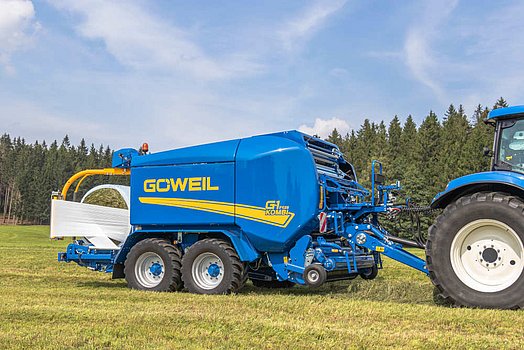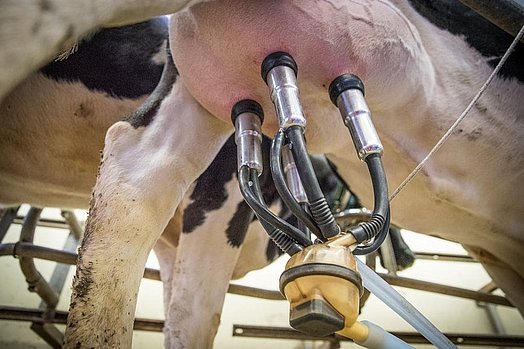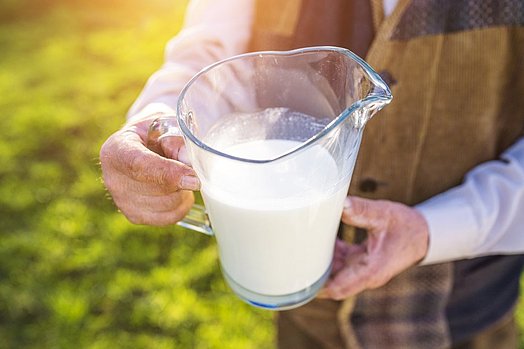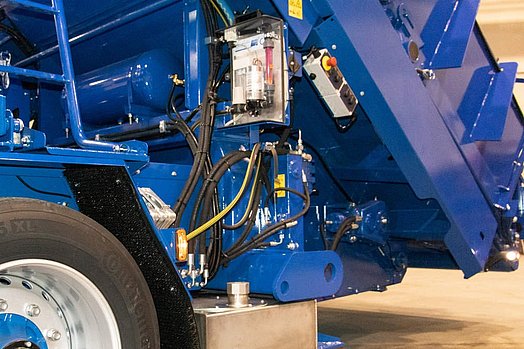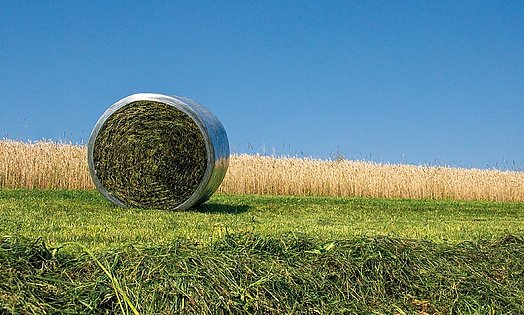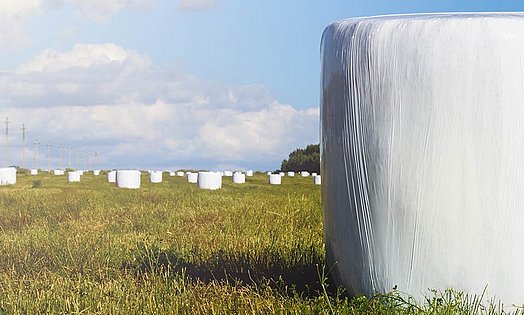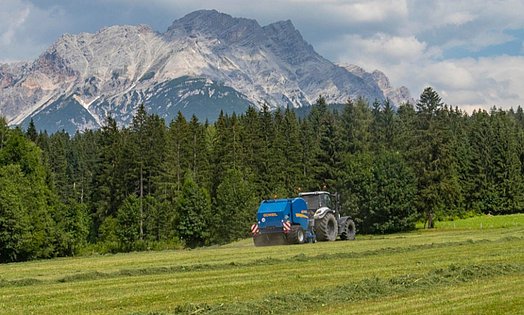Optimal harvest time for round bale silage
Harvest times and their impact on forage quality
A crop’s initial growth offers the highest forage quality. But determining the optimal harvest time for the first cut represents a major challenge every spring. In this article, we discuss how to get the best results.
How do I determine the perfect time for the first cut?
For the first cut, it’s important to pay close attention to the start of the vegetative phase. In Europe, this is calculated using a metric known as the accumulated farmland temperature. Once this value reaches 200, plants begin to grow and field work can begin. This metric is calculated as a weighted sum of temperature values since the start of a calendar year, assigning a lower weight to the winter months. Relevant numbers are posted on the websites of various weather services, or check the appropriate metrics and information sources for your region.
Once growth has begun, watch for the following milestones:
About 30-45 days after the start of the vegetative phase (early/late grasses)
10-16 inch plant height
Start of ear/panicle emergence
The plant height can simply be measured with a yardstick. Over time and with experience, you’ll also be able to estimate the height by eye.
The ideal mowing time for silage applications is when the primary grasses start to produce ears/panicles. When ears or panicles emerge, they push their way out from the side of the youngest leaf. The primary grass is the grass that is most widespread on a given plot. Depending on what type of grass it is, the time will vary somewhat, based mainly on whether the primary grass is an early- or late-heading variety. The plot’s elevation and the type of soil (marshland, etc.) also play a major role. The most important thing is to always keep an eye on the crop.
When the first cut takes place will also depend to a significant extent on whether you prefer to prioritize yield (dry matter) or quality (energy). In the spring, grass growth starts at maximum energy concentration. Generative shoot formation is especially pronounced at this stage, which can lead to a sudden drop in energy. Therefore, harvesting should not be delayed for too long.
How can early mowing help to promote a high-quality crop?
Another aspect of early mowing is that it promotes tillering in ryegrass crops, resulting in plant cover with high energy density and good harvesting results. It’s also important to avoid developing a plant stock that is too heavily dominated by tall grasses, which will see a rapid drop in energy concentration and is not suitable for feeding high-yield livestock. Tall grasses are bunch grasses like cat grass, false oatgrass, meadow fescue and meadow foxtail. They have many flower stalks and are rich in fiber. Nitrogen promotes their growth. They yield large crop volumes, but tend to turn woody. These crops are therefore more suitable for producing hay. Kentucky bluegrass, oatgrass and red fescue are all low grasses. They have many side shoots and a high proportion of foliage, and thus provide dense turf. Their growth tends to be lower and wider.
When should later cuts be made?
In general, the basis for high quality in every cut is established by an early first cut. Regardless of whether you then proceed with a 2- or 4-cut cycle, it’s important to determine the right harvest time for each and every cut. The longer you wait, the higher the fiber content will be, and the lower the energy. The key factor is always which primary grasses are present and what proportion of legumes you have. For example, white clover reaches its peak around mid-June. As such, it only really achieves its full potential at the second cut.
How does the timing of each cut affect forage quality?
Cows’ milk performance depends on the energy and nutrients in their staple forage.
In other words, the more nutrients and energy are present, and the more digestible the staple forage is, the higher the milk yield will be.
Therefore, harvest times also need to be carefully coordinated with livestock farming operations. The fiber content of the crop’s initial growth increases quickly, and digestibility also drops as a result. The recommended fiber content (109.1 grams of fiber (F) per pound of dry matter (DM)) is reached when ears/panicles emerge in the primary grass. That comes to about 20 percent, which then increases by another 2 percent through ensilage.
If the fiber content reaches about 30 percent, significantly above the recommended level, then livestock will no longer eat the forage as readily. This is most easily seen in the pasture. However, even with a very early cut, the fiber concentration will still be sufficient. So it’s better to harvest too early than too late. In livestock applications, the higher fiber content means that a later cut is more suitable for horses.
As fiber concentration in dry matter increases, the raw protein content decreases by 1.86 g / lb DM, and energy content decreases by 10.9 kcal NEL / lb DM. Compression during ensilage becomes increasingly difficult, and the pH value increases. Its ability to be conserved also drops dramatically. Early on, this can still be countered with silage additives. The G-1 F125 Kombi and the LT-Master can both be retrofitted with a metering unit.
The costs of concentrated forage are also an important reason to harvest as early as possible at the highest possible energy concentration. Very young growth often shows an energy content of up to 815 kcal NEL / lb dry matter. For round bale silage, harvesting at this very young stage can be worthwhile, since even small quantities can be baled into round bales. For ensilage for high-yield livestock, it’s important to have an energy concentration of at least 706 kcal NEL / lb DM.
Conclusion
Any way you look at it, choosing the right harvest time is essential for forage quality. It helps in producing high-quality, perfectly compressed round bales, and in keeping work procedures simple. It also saves on concentrated forage costs and additional purchases. For all cuts, the composition and management of the crops must be carefully monitored and organized. To help with this, some agricultural associations offer analyses that provide prognoses and help in your decision-making process.
Looking for the perfect machine to give you the perfect cut?
CONTACT US TODAY!
What other topics would you like to know more about?
Email us your suggestions at marketing@goeweil.com



